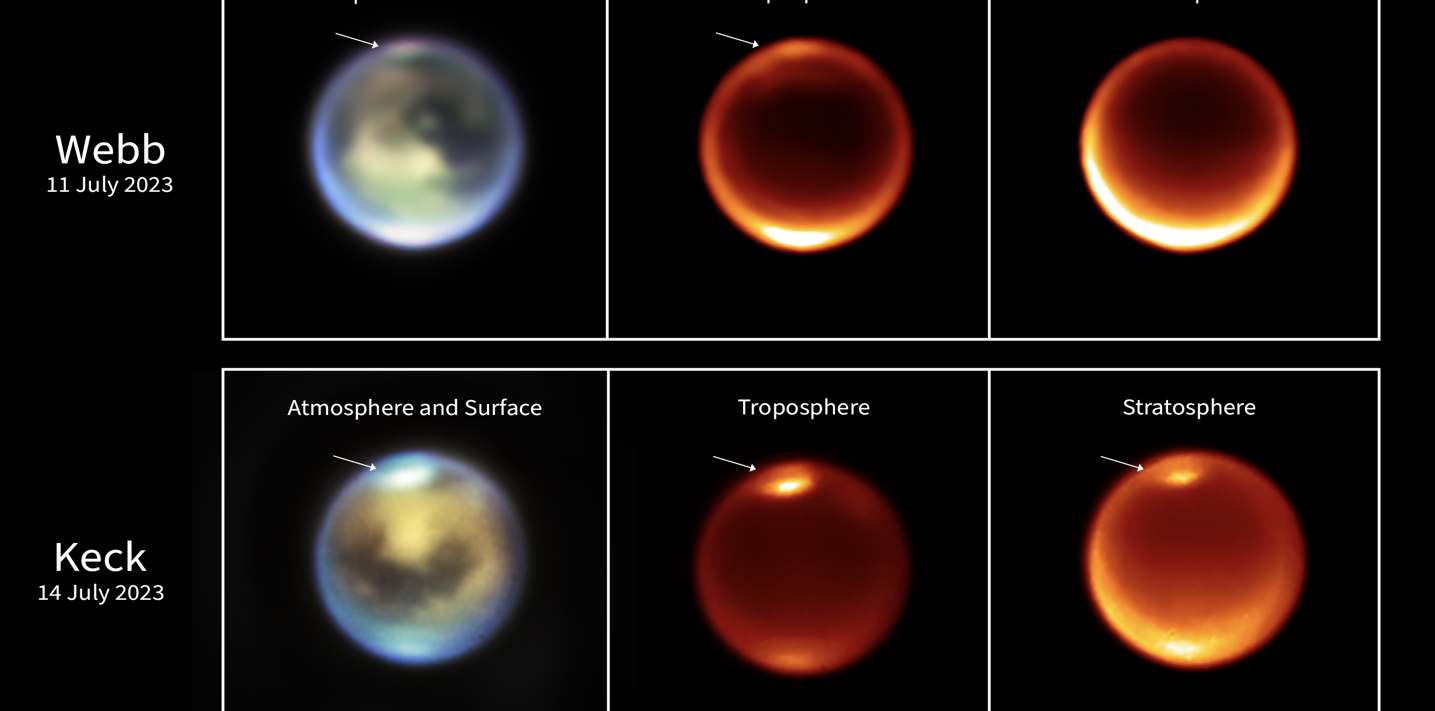Active weather and organic chemistry on Titan: new observations from the James Webb space telescope
The James Webb space telescope (JWST), in collaboration with the ground-based Keck II telescope, has for the first time observed cloud convection in the northern hemisphere of Titan, Saturn’s largest moon. This study, which includes contributions from researchers at the IPGP, offers new insights into the atmospheric dynamics and organic chemistry of this astrobiologically significant body. Conducted as part of JWST’s guaranteed time observations program, the research has been published in Nature Astronomy

Images de Titan captées en juillet 2023 par le télescope spatial James Webb (11/07) et Keck (14/07), révélant des nuages de méthane à différentes altitudes / @NASA/STScI/WMKO/Alyssa Pagan








